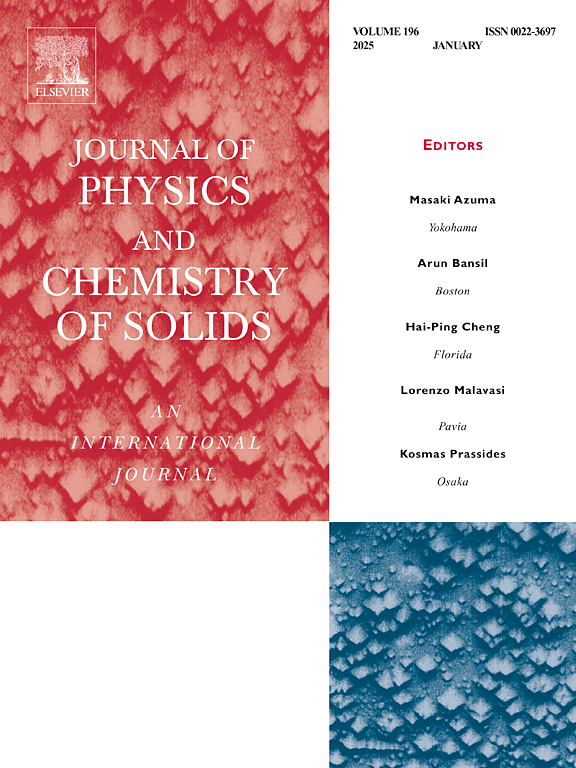DFT screening of single atom catalysts in van der Waals gap of Ti3C2Tx MXenes for enhanced hydrogen evolution reaction
IF 4.3
3区 材料科学
Q2 CHEMISTRY, MULTIDISCIPLINARY
引用次数: 0
Abstract
Single-atom catalysts (SACs) on MXene surfaces are extensively studied for various electrochemical reactions. The impact of van der Waals (vdW) interactions, however, on such catalysts’ activity has not been systematically explored through a high throughput screening. The current study uses the vdW interactions in a double-layer Ti3C2Tx MXene to improve the hydrogen evolution reaction (HER). In this venue, the density functional theory (DFT + D3) was applied to study double-layer MXenes supported 3d, 4d, and 5d transition metals, labeled as MvdW@Ti3C2Tx. The goal was to identify SACs with appropriate electrochemical and thermodynamic stability and low HER overpotentials. It was discovered that, the HER may occur within the vdW gap of TcvdW@Ti3C2Tx and RevdW@Ti3C2Tx, resulting in overpotentials of 0.06 and 0.03 V, respectively. The improved HER activity was attributed to the charge density present in the corresponding vdW gaps. Density of states (DOS) analysis showed the hybridization of the dyz orbital of active sites with the s orbital of the H∗ intermediate through the HER. This work is of great importance in the discovery and design of multi-layer electrocatalysts, making vdW interactions an effective tool in electrochemistry at room temperature.

求助全文
约1分钟内获得全文
求助全文
来源期刊
CiteScore
7.80
自引率
2.50%
发文量
605
审稿时长
40 days
期刊介绍:
The Journal of Physics and Chemistry of Solids is a well-established international medium for publication of archival research in condensed matter and materials sciences. Areas of interest broadly include experimental and theoretical research on electronic, magnetic, spectroscopic and structural properties as well as the statistical mechanics and thermodynamics of materials. The focus is on gaining physical and chemical insight into the properties and potential applications of condensed matter systems.
Within the broad scope of the journal, beyond regular contributions, the editors have identified submissions in the following areas of physics and chemistry of solids to be of special current interest to the journal:
Low-dimensional systems
Exotic states of quantum electron matter including topological phases
Energy conversion and storage
Interfaces, nanoparticles and catalysts.

 求助内容:
求助内容: 应助结果提醒方式:
应助结果提醒方式:


